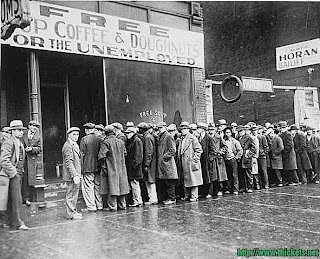92. Hoover recommended that Congress vote for huge sums for useful public works. The most imposing of these projects was the Hoover Dam on the Colorado River.
93. Hoover opposed all schemes that he saw as "socialistic," such as the Muscle Shoals Bill, which he vetoes because he opposed the government selling electricity in competition with its own citizens.
94. The Reconstruction Finance Corporation was created in 1932 and became a government leading bank. It was meant to provide indirect relief by helping insurance companies, banks, agricultural organizations, railroads, and state and local governments. It would specifically not give loans to individuals. It was of widespread benefit, though it came months to late to be most useful, as well as obviously beneficial to giant corporations.
95. Indirect benefits flowed to labor. The Norris-La Guardia Anti-Injunction Act in 1932 outlawed anti-union contracts and forbade the federal courts from issuing injunctions to restrain strikes, boycotts, or peaceful picketing.
96. Hoover's efforts to lead were complicated by a hostile Congress. During his first two years, the Republican majority was highly uncooperative. During his last two years, the Democrats come in control of the House and nearly the Senate. Insurgent Republicans combined with opposition Democrats to harass Hoover, and Congress deliberately created some of his troubles.











